《操作系统 精髓与设计原理 Internals and Design Principles》
| 作者 | William Stallings 编者 |
|---|---|
| 出版 | 北京:清华大学出版社 |
| 参考页数 | 784 |
| 出版时间 | 1998(求助前请核对) 目录预览 |
| ISBN号 | 7302029768 — 求助条款 |
| PDF编号 | 87627218(仅供预览,未存储实际文件) |
| 求助格式 | 扫描PDF(若分多册发行,每次仅能受理1册) |
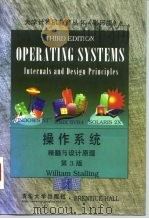
PART ONE BACKGROUND1
Chapter 1 Computer System Overview3
1.1 Basic Elements3
1.2 Processor Registers4
1.3 Instruction Execution7
1.4 Interrupts10
1.5 The Memory Hierarchy21
1.6 Cache Memory24
1.7 I/O Communication Techiques28
1.8 Recommended Reading31
1.9 Problems32
Appendix 1APerformance Characteristics of Two-Level Memory34
Appendix 1B Procedure Control41
Chapter 2 Operating System Overview45
2.1 Operating System Objectives and Functions45
2.2 The Evolution of Operating Systems50
2.3 Major Achievements60
2.4 Characteristics of Modern Operating Systems71
2.5 Windows NT Overview74
2.6 Traditional UNIX Systems85
2.7 Modern UNIX Systems88
2.8 Outline of the Remainder of the Book90
2.9 Recommended Reading94
2.10 Problems95
PART TWO PROCESSES99
Chapter 3Process Description And Control101
3.1 Process States102
3.2 Process Description117
3.3 Process Control127
3.4 UNIX SVR4 Process Management135
3.5 Summary140
3.6 Recommended Reading141
3.7 Problems141
Chapter 4 Threads, SMP, and Microkernels145
4.1 Processes and Threads145
4.2 Symmetric Multiprocessing(SMP)160
4.3 Microkernels163
4.4 Solaris Thread and SMP Management170
4.5 Windows NT Thread and SMP Management176
4.6 Summary182
4.7 Recommended Reading183
4.8 Problems183
Chapter 5 Concurrency:Mutual Exclusion and Synchronization187
5.1 Principles of Concurrency188
5.2 Mutual Exclusion:Software Approaches197
5.3 Mutual Exclusion:Hardware Support204
5.4 Semaphores208
5.5 Monitors222
5.6 Message Passing230
5.7 Readers/Writers Problem237
5.9 Recommended Reading242
5.8 Summary242
5.10 Problems243
Chapter 6 Concurrency:Deadlock And Starvation253
6.1 Principles of Deadlock253
6.2 Deadlock Prevention260
6.3 Deadlock Avoidance262
6.4 Deadlock Detection266
6.5 An Integrated Deadlock Strategy269
6.6 Dining Philosophers Problem270
6.7 UNIX Concurrency Mechanisms271
6.8 Solaris Thread Synchronization Primitives275
6.9 Windows NT Concurrency Mechanisms278
6.10 Summary279
6.11 Recommended Reading281
6.12 Problems281
PART THREE MEMORY287
Chapter 7Memory Management289
7.1 Memory Management Requirements289
7.2 Memory Partitioning292
7.3 Paging304
7.4 Segmentation307
7.5 Summary309
7.6 Recommended Reading309
7.7 Problems310
Appendix 7A Loading and Linking311
Chapter 8 Virtual Memory319
8.1 Hardware and Control Structures320
8.2 Operating System Software339
8.3 UNIX and Solaris Memory Management360
8.4 Windows NT Memory Management365
8.5 Summary368
8.6 Recommended Reading369
8.7 Problems369
Appendix 8A Hash Tables372
PART FOUR SCHEDULING377
Chapter 9Uniprocessor Scheduling379
9.1 Types of Scheduling380
9.2 Scheduling Algorithms384
9.3 Traditional UNIX Scheduling406
9.4 Summary408
9.5 Recommended Reading409
9.6 Problems409
Appendix 9A Response Time413
Chapter 10 Multiprocessor and Real-Time Scheduling417
10.1 Multiprocessor Scheduling417
10.2 Real-Time Scheduling429
10.3 UNIX SVR4 Scheduling442
10.4 Windows NT Scheduling444
10.5 Summary446
10.7 Problems447
10.6 Recommended Reading447
PART FIVE INPUT/OUTPUT AND FILES449
Chapter 11I/O Management and Disk Scheduling451
11.1 I/O Devices451
11.2 Organization of the I/O Function453
11.3 Operating System Design Issues456
11.4 I/O Buffering460
11.5 Disk Scheduling463
11.6 RAID471
11.7 Disk Cache479
11.8 UNIX SVR4 I/O482
11.9 Windows NT I/O486
11.10 Summary488
11.11 Recommended Reading489
11.12 Problems490
Appendix 11A Disk Storage Devices492
Chapter 12 File Management501
12.1 Overview501
12.2 File Organization507
12.3 File Directories512
12.4 File Sharing515
12.5 Record Blocking518
12.7 UNIX File Management527
12.8 Windows NT File System529
12.10 Recommended Reading535
12.9 Summary535
12.11 Problems539
PART SIX DISTRIBUTED SYSTEMS539
Chapter 13Distributed Processing, Client/Server, and Clusters543
13.1 The Need for a Protocol Architecture544
13.2 The TCP/IP Protocol Suite545
13.3 The OSI Protocol Architecture553
13.4 Client/Server Computing553
13.5 Distributed Message Passing565
13.6 Remote Procedure Calls569
13.7 Clusters573
13.8 Windows NT Wolfpack577
13.9 Solaris MC579
12.6 Secondary Storage Management579
13.10 Summary582
13.11 Recommended Reading583
13.12 Problems583
Chapter 14 Distributed Process Management585
14.1 Process Migration585
14.2 Distributed Global States592
14.3 Distributed Mutual Exclusion597
14.4 Distributed Deadlock607
14.5 Summary620
14.6 Recommended Reading620
14.7 Problems621
PART SEVEN SECURITY623
Chapter 15Security625
15.1 Security Threats626
15.2 Protection632
15.3 Intruders636
15.4 Viruses and Related Threats650
15.5 Trusted Systems658
15.6 Network Security660
15.7 Windows NT Security668
15.8 Summary674
15.9 Recommended Reading675
15.10 Problems675
Appendix 15A Encryption677
Appendix A Queuing Analysis683
A.1 Why Queuing Analysis?684
A.2 Queuing Models686
A.3 Single-Server Queues691
A.4 Multiserver Queues694
A.5 Networks of Queues695
A.6 Examples699
A.7 Other Queuing Models702
A.8 Recommended Reading702
Annex A Just Enough Probability and Statistics703
B.1 Motivation709
B.2 Object-Oriented Concepts709
Appendix B Object-Oriented Design709
B.3 Benefits of Object-Oriented Design714
B.4 CORBA715
B.5 Recommended Reading717
Appendix C Programming and Operating System Projects719
C.1 Projects for Teaching Operating Systems719
C.2 NACHOS720
C.3 Programming Projects721
C.4 Reading/Report Assignments722
Appendix D OSP:An Environment for Operating System Projects723
D.1 Overview723
D.2 Innovative Aspects of OSP726
D.3 Comparison with Other Operating System Courseware728
D.4 The OSP Software Distribution729
D.5 OSP Mailing List729
D.6 Future Plans730
Appendix E BACI:The Ben-Ari Concurrent Programming System731
E.1 Introduction731
E.2 BACI732
E.3 Examples of BACI Programs735
E.4 BACI Projects739
E.5 Enhancements to the BACI System742
Glossary743
References753
Index770
1998《操作系统 精髓与设计原理 Internals and Design Principles》由于是年代较久的资料都绝版了,几乎不可能购买到实物。如果大家为了学习确实需要,可向博主求助其电子版PDF文件(由William Stallings 1998 北京:清华大学出版社 出版的版本) 。对合法合规的求助,我会当即受理并将下载地址发送给你。
高度相关资料
-

- 操作系统原理与设计
- 1997 北京:北京理工大学出版社
-
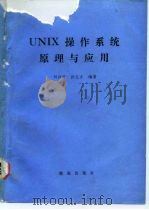
- UNIX操作系统原理与应用
- 能源出版社
-
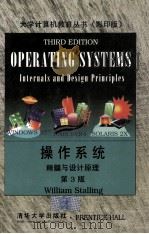
- 操作系统 精髓与设计原理 第3版
- 1998 清华大学出版社
-

- 操作系统原理
- 1981 北京:国防工业出版社
-
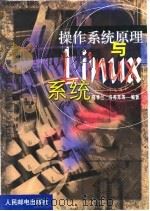
- 操作系统原理与Linux系统
- 1999 北京:人民邮电出版社
-

- 操作系统逻辑设计
- 1984 北京:人民邮电出版社
-

- 操作系统原理
- 1980 北京:人民邮电出版社
-

- UNIX 操作系统设计
- 1989 北京:北京大学出版社
-

- 伺服系统原理与设计
- 1993 北京:北京理工大学出版社
-

- 操作系统原理
- 1986 上海:上海科学技术文献出版社
-

- 操作系统实验与课程设计
- 1995 武汉:华中理工大学出版社
-
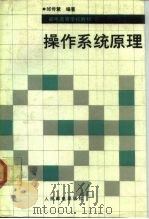
- 操作系统原理
- 1992 北京:人民邮电出版社
-

- 操作系统原理
- 1995 长沙:国防科技大学出版社
提示:百度云已更名为百度网盘(百度盘),天翼云盘、微盘下载地址……暂未提供。➥ PDF文字可复制化或转WORD

